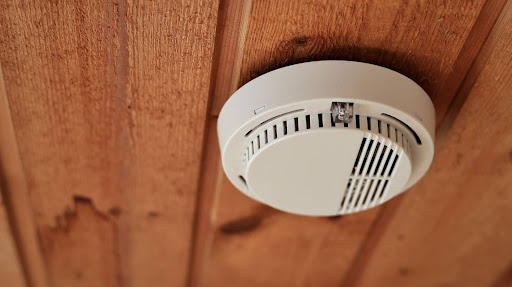When it comes to home safety, nothing is more important than making sure your smoke detectors are working properly. These small devices are your first line of defense in the event of a fire, alerting you to danger before it has a chance to spread.
At Grasser Electric, we care about your family’s safety, and that includes helping you understand how to test your smoke detector the right way. Whether you’re checking a unit in your bedroom, hallway, or kitchen, our expert electricians have got you covered with simple steps and helpful insights. Let’s get started!
Why Testing Your Smoke Detector Matters
Your smoke detector’s main job is to sense smoke and heat, warning you with a loud siren before flames can put your home or your life at risk. But like any device, smoke detectors need occasional attention. Dust buildup, battery failure, and sensor aging can all keep a detector from working when you need it most. Testing your smoke detector regularly ensures the system is ready to protect you at a moment’s notice.
And don’t forget about carbon monoxide detectors. These often come combined with smoke detectors. Since carbon monoxide is invisible, tasteless, and odorless, the sensor needs to be in perfect shape to detect carbon buildup before it becomes a serious health risk.
Step-by-Step: How to Test Your Smoke Detector
Testing your smoke detector is quick and easy, and it doesn’t require any special tools. Follow these steps to get it done right:
1. Let Your Household Know First
Before you push that button, give your family a heads-up. The siren is loud, and if your detectors are interconnected, the alarm may go off in every room.
2. Use the Test Button
Every smoke detector comes with a test button. Press and hold it down for a few seconds. You should hear a loud, high-pitched siren. If the sound is weak or silent, it’s time to change the battery or replace the unit entirely.
3. Test With Actual Smoke (Optional)
If you want to take testing a step further, you can carefully use a smoke source like a blown-out candle held near the unit. Avoid using an open flame. The sensor should detect the smoke and sound the alarm within a few seconds.
4. Check the Response Time
If there’s a delay in the alarm going off, that could mean the sensor is slow or faulty. In that case, you might want an electrician to check it out or replace it.
5. Call in the Pros if Needed
If you’re unsure about any step, or if your detector fails to respond, it’s always best to have a certified electrician take a look. At Grasser Electric, we’ll make sure every sensor in your home is functioning exactly as it should.
Best Places to Install and Test Smoke Detectors
Smoke detectors should be installed in key locations throughout your home for maximum fire safety. Here’s where you should focus:
- Bedrooms: Fires can start while you’re asleep. You need a detector nearby to wake you up.
- Hallways and Common Areas: These are ideal for interconnected alarms that alert the whole home.
- Kitchen: Cooking is one of the leading causes of house fires. Install a detector nearby, but not directly over the stove, to prevent a false alarm.
- Basements and Attics: These out-of-sight areas can house appliances or wiring that may spark flames.
Pro tip: Don’t install detectors too close to vents, windows, or ceiling fans, as airflow can affect the sensor’s accuracy.
How Often Should You Test?
We recommend testing your smoke detectors once a month. Yes, monthly. It only takes a few seconds to press that button, but it could make all the difference in an emergency. You should also:
- Replace the batteries once a year or as soon as the low-battery chirp starts
- Clean the detector gently every six months with a vacuum attachment
- Replace the entire unit every 8 to 10 years, depending on the manufacturer’s recommendations
If you’re using a ladder to reach your detectors, always practice safe habits. Don’t hesitate to call in a licensed electrician from Grasser Electric if you’re unsure about anything. Your safety is worth it.
Common Problems to Watch For
If your smoke detector keeps going off when you’re cooking dinner, it might be too close to the heat source. Try moving it a few feet farther from your stove to reduce the chance of a false alarm.
A constantly chirping detector might indicate a weak battery, or it could signal that the sensor is at the end of its life. Don’t ignore it.
If your detector doesn’t respond at all during a test, it could be disconnected from power or simply too old to function. This is when calling an electrician is essential.
Stay Protected With Help From Grasser Electric
Knowing how to test your smoke detector is a smart first step. But staying on top of your home’s electrical safety takes time, effort, and expertise. That’s where we come in.
At Grasser Electric, our friendly, licensed electricians can inspect your smoke and carbon monoxide detectors, check wiring, replace aging sensors, and make sure your entire home is fire-safe. We also handle countless other electrical services, including panel upgrades, wiring repairs, and more.
Don’t wait for a scare to take action. Contact Grasser Electric today to schedule your smoke detector inspection and keep your home safe from smoke, heat, and flame.

